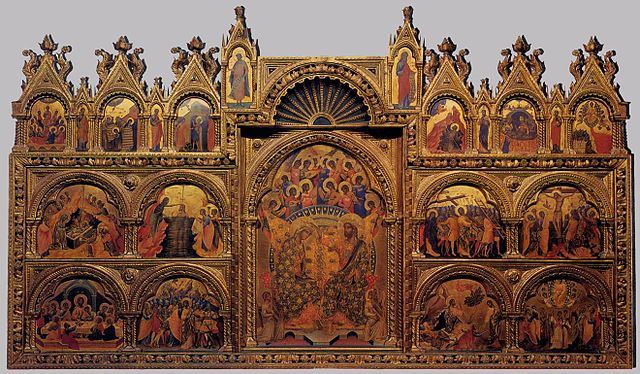Lorenzo Lotto was an Italian painter, draughtsman, and illustrator, traditionally placed in the Venetian school, though much of his career was spent in other north Italian cities. He painted mainly altarpieces, religious subjects and portraits. He was active during the High Renaissance and the first half of the Mannerist period, but his work maintained a generally similar High Renaissance style throughout his career, although his nervous and eccentric posings and distortions represented a transitional stage to the Florentine and Roman Mannerists.
Possible self-portrait, attributed to Lorenzo Lotto, 1540s, Thyssen-Bornemisza Museum
Madonna of the Rosary (1539), oil on canvas
The Adoration of the Child, (c. 1508), oil on panel
Martyrdom of St. Claire (1524), fresco
Venetian painting was a major force in Italian Renaissance painting and beyond. Beginning with the work of Giovanni Bellini and his brother Gentile Bellini and their workshops, the major artists of the Venetian school included Giorgione, Titian, Tintoretto (1518–1594), Paolo Veronese (1528–1588) and Jacopo Bassano (1510–1592) and his sons. Considered to give primacy to colour over line, the tradition of the Venetian school contrasted with the Mannerism prevalent in the rest of Italy. The Venetian style exerted great influence upon the subsequent development of Western painting.
Titian, Salome with the Head of John the Baptist c. 1515; this religious work also functions as an idealized portrait of a beauty, a Venetian genre developed by Titian, supposedly often using Venetian courtesans as models.
Canaletto, The Entrance to the Grand Canal, c. 1730, a typical veduta
Giovanni Bellini, San Zaccaria Altarpiece, 1505, a late work, San Zaccaria, Venice
Paolo Veneziano, polyptych altarpiece with Coronation of the Virgin, c. 1350








